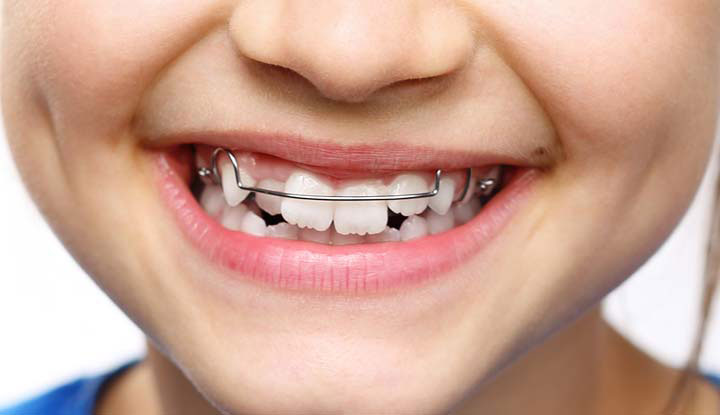Malocclusion or “bad bites” is one of the most common dental problems. When you have malocclusion, your upper and lower teeth don’t align when you close your mouth. Malocclusion is usually treated with orthodontics or braces. Some more serious malocclusion might require surgery.

Malocclusion or “bad bites” is one of the most common dental problems. When you have malocclusion, your upper and lower teeth don’t align when you close your mouth. Malocclusion typically happens when your teeth are crowded — meaning your teeth are too large for your mouth — or are crooked. But it can also happen if your upper and lower jaws aren’t aligned. Malocclusion is usually treated with orthodontics or braces. Some more serious malocclusion might require surgery.
Cleveland Clinic is a non-profit academic medical center. Advertising on our site helps support our mission. We do not endorse non-Cleveland Clinic products or services. Policy
Left untreated, malocclusion can cause several health problems. Apart from causing dental problems such as decayed teeth, losing teeth or developing gum disease, malocclusion can affect how you chew food or how you speak. It can also damage your tooth enamel or cause problems with your jaw.
Just as important, untreated malocclusion can affect your mental health. Researchers have found connections between malocclusion and self-esteem. Some studies show people who have malocclusion avoid social situations and relationships because they feel self-conscious about their appearance.
Malocclusion can happen several different ways:
Some researchers believe grinding your teeth (bruxism) is a risk factor for malocclusion. Some people grind their teeth when they’re feeling stressed, anxious or angry.
Malocclusion can cause TMJ, which are disorders that affect your jaw joints and surrounding muscles and ligaments.
Your appearance is the most common symptom of malocclusion. You might have a noticeable overbite or underbite. Overbite or overjet (retrognathism) happens when teeth in your lower jaw are too far behind teeth in your upper jaw. Underbite happens when your upper front teeth are too far behind your lower front teeth. Other symptoms are:
Healthcare professionals typically check to see if your teeth are aligned as part of your regular dental visits. They might take dental X-rays to learn more about your condition or make impressions of your teeth. Your regular provider will refer you to an orthodontist for malocclusion treatment.
There are three classes of malocclusion. The classes are based on your bite and whether your upper or lower teeth are misaligned:
Treatment for malocclusion might include:
Most malocclusion is hereditary and cannot be prevented. You prevent malocclusion in your children by discouraging them from sucking their thumbs. You can develop malocclusion if you lose teeth. If you’ve lost teeth, consider replacing the missing teeth with dental implants or dental bridges.
If you have malocclusion, it can take time for your teeth to realign. You might be wearing braces and then retainers for several years. The length of time varies from person to person, depending on:
Your orthodontist will schedule regular appointments to check your braces, and if needed, tighten your braces.
You should see your provider for regular dental check-ups at least every six months. These check-ups will be in addition to seeing your orthodontist for malocclusion treatment.
Treating malocclusion takes time. You probably will have braces on your teeth for several months to more than a year while your teeth are gently realigned. You might have to change your personal habits to accommodate your braces and ensure your overall dental health isn’t affected by your braces. Talk to your healthcare provider about taking care of your teeth while wearing braces.
If you wear braces to correct malocclusion, you should contact your provider if your braces start to hurt or are damaged.
A note from Cleveland Clinic
Having malocclusion – when your upper and lower teeth don’t line up – can affect everything from your dental health to your mental health. Left untreated, malocclusion increases the chance you’ll develop cavities or gum disease. People with malocclusion often struggle with self-esteem and social anxiety. Fortunately, it’s never too late for treatment.
Last reviewed by a Cleveland Clinic medical professional on 11/08/2021.
Learn more about our editorial process.
Cleveland Clinic is a non-profit academic medical center. Advertising on our site helps support our mission. We do not endorse non-Cleveland Clinic products or services. Policy